Kumbhakarna & Kleine-Levin Syndrome - A New Theory about the Ramayana
- In Religion
- 09:07 AM, May 24, 2018
- Nilesh Nilkanth Oak
[Author's Note: This short note is a high level summary of the upcoming book on the same subject by the author]
Kleine–Levin syndrome (KLS) is a rare disease characterized by recurrent episodes of hypersomnia and, to various degrees, compulsive eating behavior, hyper sexuality and behavioral or cognitive disturbances (American Academy of Sleep Medicine, 2005). The disease predominantly affects adolescent males. Although no population-based studies reporting on KLS prevalence are available, it is generally considered an exceptionally rare disease. What appears to be the first case of KLS was reported by Brierre de Boismont in 1862. It is notable that this case occurred several decades prior to the 1916–1927 epidemic of encephalitis lethargica. Multiple cases of recurrent hypersomnia were first collected and reported in Frankfurt by Willi Kleine in 1925 (Kleine, 1925). Max Levin (1929, 1936) emphasized the association of periodic somnolence with morbid hunger in 1929 and 1936. Critchley (1962), reviewed 15 previously published cases, added 11 of his own personal cases, notably young marines in the British Royal Navy, where he had served during World War II (Critchley and Hoffman, 1942) and gave the eponymous name to the disease, ‘Kleine–Levin syndrome’. Kumbhakarṇa, a younger brother of Rāvaṇa, is a minor character of Vālmīki Rāmāyana. Interestingly, the text of Vālmīki Rāmāyana preserves for us impressive evidence on multiple aspects of the rare condition Kumbhakarṇa is afflicted with, including the plausible causes and especially the management and treatment administered to Kumbhakarṇa, more than 14,000 years ago. The similarities between documented symptoms of the so called Kleine-Levin syndrome, management and pathology with the descriptions of Kumbhakarṇa, makes for the case of Kumbhakrana, as possibly the first documented case of KLS in human history.
1.What is Kleine-Levin Syndrome
In 2005, American academy of Sleep Medicine defined Kleine–Levin syndrome (KLS) as a rare disease that was characterized by recurrent episodes of hypersomnia and, to various degrees, compulsive eating behavior, hyper sexuality and behavioral or cognitive disturbances.
1.1 Definition of KLS
The definition was modified, and hypersomnia foundation states the definition of KLS as follows:
KLS is a rare disorder in which affected people experience episodes at least once per year during which they sleep for at least 11 hours out of every day (but often for days at a time), eat excessively (Megaphagia), have abnormal thinking & behavior, and hypersexuality. Between episodes, their alertness, behavior and thinking are normal.
1.2 Occurrence & detection of KLS
Kleine-Levin syndrome (KLS) is characterized as a neuropsychiatric disease that affects about one in a million people. Most people who have KLS develop symptoms for the first time as teenagers. Symptoms typically become less severe with age. Even though the symptoms of KLS are unique, the disorder is often not recognized.
2. Kumbhakarṇa
Summary of Kumbhakarṇa, as narrated by Vālmīki Rāmāyana is as follows:
2.1 Kumbhakarṇa & his siblings
Kumbhakarṇa was younger brother of Rāvaṇa, younger only to Rāvaṇa among his 4 siblings (Rāvaṇa, Kumbhakarṇa, Śurpaṇakhā and Vibhīṣaṇ in that order).
Uttara 9:33

2.2 Kumbhakarṇa & his family
Rāvaṇa arranged wedding of Kumbhakarṇa with Vajrajwāla, a girl born to descendants of Vairocana.
Uttara 12:21-22

Kumbhakarṇa had two sons from Vajrajwāla. They were Kumbha and Nikumhba.
2.3 Kumbhakarṇa the warrior
He was very tall and had a distinguished personality. He was brave and expert in the art of war. He had fought in numerous battles and was victorious. He scolded Rāvaṇa, his elder brother, for snatching Sītā away from Rāma and thus bringing calamity upon Lanka. After Rāvaṇa lost in the battle to Rāma, Rāvaṇa ordered his ministers to wake up Kumbhakarṇa. All the Rakśasas had to put in a lot of efforts to wake up Kumbhakarṇa. After enormous efforts, finally Kumbhakarṇa did wake up, went on eating and drinking binge, then met with Rāvaṇa and then went to battlefield. He fought with valor, however was eventually killed by Rāma.
2.4 Kumbhakarṇa & Kleine-Levin Syndrome
After researching Vālmīki Rāmāyana for more than 20 years, I established 12209 BCE as the year of Rāma-Rāvaṇa yuddha. This revolutionary work was based on exhaustive testing of more than 500+ astronomy observations of Vālmīki Rāmāyana. This work made me read Vālmīki Rāmāyana multiple times and every time I read unique symptoms of Kumbhakarṇa, they haunted me. While many readers of Vālmīki Rāmāyana have simply interpreted these symptoms of Kumbhakarṇa either with indifference or with justification based on poetic exaggerations, I was never satisfied with either approaches. In late 2006, I was involved in formulation of sleep wellness products based on Ayurveda and aromatherapy. This led me to read everything about sleep and sleep related diseases. This is when I became familiar with the so called Kleine-Levin syndrome. I speculated that the rare condition of Kumbhakarṇa, narrated in Vālmīki Rāmāyana, must be identical with Kleine-Levin syndrome. I was aware that biographical material available on Kumbhakarṇa was limited. After all he was only a tertiary, albeit important, character of Rāmāyana times. I enumerated the process I was going to follow in researching the connection between Kumbhakarṇa and KLS as follows:
- I decided to write down, in brief, what I knew about Kumbhakarṇa, as I could recall from what I had read or heard, focusing on relevant details to my hypothesis and ignoring non-relevant aspect of Kumbhakarṇa’s life.
- Conduct a quick survey among my Indian friends and ask them to recall what they knew of Kumbhakarṇa, without providing them any background as to why I was asking this question.
- I made a list of predictions, based on my newly acquired awareness of KLS, for behavior of Kumbhakarṇa (e.g. Hypersomnia and KLS specific sleeping patterns, megaphagia, hypersexuality, etc.), to be found (or not) in the pages of Vālmīki Rāmāyana.
- I also enumerated plausible causes for Kumbhakarṇa becoming prone to KLS. They were (and are) speculative assertions. They were done by me in the spirit of reasoned speculation and meant to be of use to future researchers and healthcare professionals in the field of KLS.
3. KLS diagnosis vs Kumbhakarṇa descriptions of Vālmīki Rāmāyana
3.1 Symptoms easy to test
Let’s look at easy to test symptoms of Kleine-Levin syndrome – Hypersomnia & Megaphagia

3.1.1 Hypersomnia
Hypersomnia is a major clinical symptom of KLS, is mandatory for diagnosis and was present in all cases, i.e. 100% of KLS patients had hypersomnia. Rāvaṇa’s espionage team had informed him about activities of Rāma and his army, however Rāvaṇa delayed the meeting of counselors due to ‘long sleep episode’ of Kumbhakarṇa. Rāvaṇa tells his counselors that he was intent on reminding all but could not inform this matter earlier because the most powerful Kumbhakarṇa, who was the chief wielder of weapon systems, was sleeping for last six months.
Yuddha 12:10-11
अहम् तु खलु सर्वन्वः समर्थयुतुमुद्यतः | कुमभकर्णस्य तु स्वप्नान्नेममर्थमचोदयम् ||
अयम् हि सुप्तः ष्ण्मासान् कुम्भकर्णो महाबलः| सर्वशस्त्रभृतम् मुख्यः स इदानीम् समुत्थितः ||
3.1.2 Eating behavior disorders (megaphagia, binge eating & drinking)
Kumbhakarṇa exhibited eating behavior disorder in multiple ways. His symptoms included megaphagia - also referred to as polyphagia or hyperphagia, is an excessive appetite or hunger and abnormally large intake of solid food. Kumbhakarṇa also exhibited other eating behavior disorders such as increased drinking, binge eating and food utilization behavior.
When Rakśasas went to wake up Kumbhakarṇa, on the 5th day of the war, they were aware of Kumbhakarṇa’s eating behavior disorders and thus had made appropriate arrangements, before waking him up. They piled up a great heap of wonderful food with meat of deers, buffaloes and wild boars and placed pots of blood and various meats next to Kumbhakarṇa.
Yuddha 60:30-32
ततश्चक्रुर्महात्मानः कुम्भकर्णस्य चाग्रातः | भूतानाम् मेरुसम्काशम् राशिम् परमतर्पणम् |
मृगाणाम् महिषाणाम् च वराहाणाम् च संचयान् | चक्रुर्नैरृतशार्दूला राशिमन्नस्य चाद्भुतम् |
ततः शोणितकुम्भांश्च मांसानि विविधानि च | पुरस्तात्कुम्भकर्णस्य चक्रुस्त्रिदशशत्रवः |
Rakśasas made numerous efforts but were not successful in waking up Kumbhakarṇa. Many elephants were employed to rub off the body of Kumbhakarṇa when he became aware of the pressure and lightly woke up. Kumbhakarṇa remained insensible to various external stimuli, but under the prompting of extreme hunger, he suddenly sprang up from sleep while yawing due to loss of sleep.
Yuddha 60:54-55
वारणानाम् सहस्रम् च शरीरेऽस्य प्रधावितम् || कुम्भकर्णस्तदा बुद्ध्वा स्पर्शम् परमबुध्यत |
स पात्यमानैर्गिरिशृङ्गवृक्षै | रचिन्तयंस्तान्विपुलान् प्रहारान् | निद्राक्षयात् क्षुद्भयपीडितश्च | विजृम्भमाणः सहसोत्पपाप ||
Rakśasas pointed to various foods next to him and mighty Kumbhakarṇa devoured them all. He ate the meat, drank the blood and gulped fat and wine from the pitchers
Yuddha 60:61-62
ततस्त्वदर्शयन् सर्वान् भक्ष्यांश्च विविधान् बहून् | वराहान् महिषांश्चैव बभक्ष स महाबलः ||
आदद्बुभुक्षितो मांसम् शोणितम् तृषितोऽपिबत् | मेदःकुम्भांश्च मद्यांश्च पपौ शक्ररिपुस्तदा ||
Kumbhakarṇa washed his face and took bath. He felt thirsty and hungry (another event of megaphagia and binge eating), asked Rakśasas to bring him drinks and food and had another go at binge eating.
Yuddha 60:90-92
प्रक्षाल्य वदनम् ह्ऱ्^ष्टः स्नातः परमभूषितः | पिपासुस्त्वरयामास पानम् बलसमीरणम् ||
ततस्ते त्वरितास्तत्र राक्षसा रावणाज्ञया | मद्यम् भक्ष्यांश्च विविधान् क्षिप्रमेवोपहारयन् ||
पीत्वा घटसहस्रे द्वे गमनायोपचक्रमे | ईषत्समुत्कटो मत्तस्तेजोबलसमन्वितः ||
Among KLS patients, eating behavior disorders exhibit extreme behaviors. The obsession with satiating hunger drive was so severe that some patients stole food in shops or off the plates of other patients in the hospital, others searched for food in dustbins and stuffed food in their mouths with both hands. Five other patients had an inability to restrain themselves from eating in the presence of food. One patient ate ‘anything’ within reach and another was offered multiple second servings shortly after he had eaten his regular meal, which he also finished. Two patients would grab any food in sight, while another would eat mechanically, finishing whatever amount was given. Patients ate six bowls of desserts, six chocolate bars (it is not clear from these case studies if they stopped after six bowls or bars because of external restraint or unavailability of additional food or simply they were satiated at this point) or drank several bottles per day of pure chocolate or blackberry syrup. Interestingly some patients would eat things they would have refused in the past, such as a Turkish patient who ate watermelon rinds or a vegetarian Indian who ate non-vegetarian food. One KLS patient would literally eat anything in sight –bricks, cement, plaster, chalks…anything.
Kumbhakarṇa is described as devouring sages, apasaras, security attendants and human beings.
Uttara 9:38

Uttara 10:38

And when Kumbhakarṇa proceeded to kill Rāma and his Vanara army, Kumbhakarṇa stated that he will go alone to the battlefield and devour Vanaras since he was feeling hungry (again!).
Yuddha 65:21
गमिष्याम्यहमेकाकी तिष्ठत्विह बलं महत् | अद्य तान्क्षुधितः क्रुद्धो भक्षयिष्यामि वानरान् ||
Kumbhkarna devoured Vanara during the fighting.
Yuddha 67:35
बाहुभ्याम् वानरान् सर्वान् प्रगृह्य स महाबलः |भक्षयामास सम्क्रुद्धो गरुडः पन्नगानिव |
3.2 Symptoms not so easy to test
Not so easy to test symptoms of KLS include hypersexuality, cognitive changes (confusion, amnesia, derealization) and irritability.
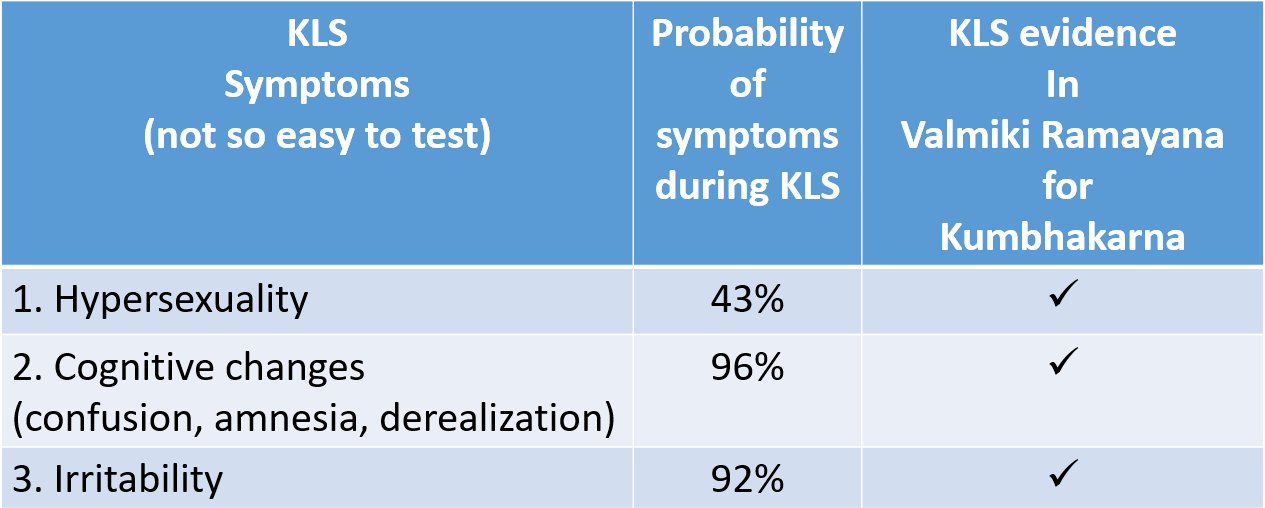
3.2.1 Hypersexuality
Nearly half of the patients had symptoms consistent with hypersexuality during KLS episodes. In males, these included increased/overt masturbation, exposing oneself, obscene language, fondling genitalia and making unwanted sexual advances. Inappropriate sexual advances included the assaulting of female nursing staff, female visitors, patient’s sisters, daughters or other female relatives and in three cases another man. Rāvaṇa asked Rakśasas to wake up slumbering Kumbhakarṇa and described Kumbhakarṇa as someone who was slumbering uninhibited, free from all cares and whose understanding was vitiated by lust.
Yuddha 60:16
निद्रावशसमाविष्टः कुम्भकर्णो विबोध्यताम् | सुखम् स्वपिति निश्चिन्तः कालोपहतचेतनः ||
Vibhīṣaṇ described Kumbhakarṇa as brave warrior, however addicted to vulgar delights and always sleeping.
Yuddha 60:19
एष केतुः परं सम्ख्ये मुख्ये वै सर्वरक्षसाम् | कुम्भकर्णः सदा शेते मूढो ग्राम्यसुखे रतः ||
Vibhīṣaṇ also described Kumbhakarṇa who devoured creatures, destroyed ashrams and repeatedly carried off other’s wives.
Yuddha 61:20
प्रजानाम् भक्षणम् चापि देवानाम् चापि धर्षणम्॥ आश्रमध्वंसनम् चापि परस्त्रीहरणम् भृशम्||
3.2.2 Cognitive changes
Almost all KLS patients had cognitive disturbances such as confusion (51%), concentration, attention and memory defects such as amnesia (48%). Additional cognitive disturbances in KLS include abnormal speech (60%), derealization (24%), hallucinations (14%) and delusions (16%).
These disturbances were evident when interviewed during episodes (such as abnormal responses to question). We do not have luxury of ‘interview evidence’ in case of Kumbhakarṇa. What is presented below is what could be gleaned from the descriptions of Vālmīki Rāmāyana. When Kumbhakarṇa was woken up, he was surprised and asked Rakśasas for the rationale for their disturbing him.
Yuddha 60: 63-66
ततस्तृप्त इति ज्ञात्वा समुत्पेरुर्निशाचराः | शिरोभिश्च प्रणम्यैनम् सर्वतः पर्यवारयन् ||
निद्राविशदनेत्रस्तु कलुषीकृतलोचनः | चारयन् सर्वतो दृष्टिम् तानुवाच निशाचरान् ||
स सर्वान् सान्त्वयामास नैर्ऱ्^तान् नैरृतर्षभः | बोधनाद्विस्मितश्चापि राक्षसानिदमब्रवीत् ||
किमर्थमहामादृत्य भवद्भिः प्रतिबोधितः | कच्चित्सुकुशलम् राज्ञो भयम् वा नेह किंचन् ||
Note that formal cognitive and memory tests were rarely used with KLS patients in modern times, and when they were used, their validity was questionable in non-cooperative, irritable, sleepy and inattentive subjects. Kumbhakarṇa also exhibited indiscrimination on the battlefield when mental confusion was combined with massive hunger. He ate not only Vānaras, Piśāchas, Rikhśas but also Rakśasas!
Yuddha 67:75
बुभुक्षितः शोणितमांसगृध्नुः | प्रविश्य तद्वानरसैन्यमुग्रम् | चखाद रक्षांसि हरीन्पिशाचान् | ऋक्षांश्च मोहाद्युधि कुम्भकर्णः | यथैव मृत्युर्हरते युगान्ते | स भक्षयामास हरींश्च मुख्यान् ||
Yuddha 67:96
एकम् द्वौ त्रीन् बहून् क्रुद्धो वानरान् सह राक्षसैः | समादायैकहस्तेन प्रचिक्षेप त्वरन्मुखे ||
3.2.3 Irritability
When Yupakśa narrated the situation to Kumbhakarṇa, Kumbhakarṇa became angry and wanted to go to the battlefield right away and Mahodara’s humble pleading calmed Kumbhakarṇa.
Yuddha 60:77-80
स यूपाक्षवचः श्रुत्वा भ्रातुर्युधि पराभवम् | कुम्भक्र्णो विवृत्ताक्षो यूपाक्षमिदमब्रवीत् ||
सर्वमद्यैव यूपाक्ष हरिसैन्यम् सलक्ष्मणम् | राघवम् च रणे जित्वा ततो द्रक्ष्यामि रावणम् ||
राक्षसांस्तर्पयिष्यामि हरीणाम् मांसशोणितैः | रामलक्ष्मणयोश्चापि स्वयम् पास्यामि शोणितम् ||
तत्तस्य वाक्यम् ब्रुवतो निशम्य | सगर्वितम् रोषविवृद्धदोषम् | महोदरो नैरृतयोधमुख्यः | कृताञ्जलिर्वाक्यमिदम् बभाषे ||
Although not explicitly stated, Rakśasas rubbing the body of rare sandalwood, sweet-smelling perfumes, burning of incense and garlanding him with fragrant flowers could be to reduce Kumbhakarṇa’s irritability.
Yuddha 60:33-34
लिलिपुश्च परार्ध्येन चन्दनेन परम्तपम् || दिव्यैराश्वासयामासुर्माल्यैर्गन्धैश्च गन्धिभिः | धूपगन्धांश्च ससृजुस्तुष्टुवुश्च परम्तपम् ||
3.3 Onset & Duration (disease, episode, between episodes)
3.3.1 Onset
Vibhīṣaṇ describes eating disorder of Kumbhakarṇa even when he was young. Soon after his birth, Kumbhakarṇa felt oppressed by hunger and started devouring creatures. This suggests that onset of Kumbhakarṇa’s KLS began when he was young.
Yuddha 61:13
एतेन जातमात्रेण क्षुधार्तेन महात्मना | भक्षितानि सहस्राणि सत्त्वानाम् सुबहून्यपि ||
The description suggests that onset of KLS in case of Kumbhakarṇa began when he was still young. This is consistent with KLS statistics. In 80%+ of cases, KLS onset occurred during the second decade with average age of 17 +/- 9 years.
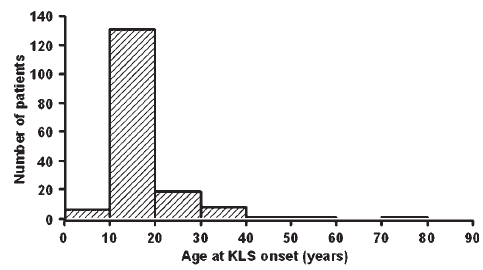
3.3.2 Disease Duration
Kumbhakarṇa’s KLS began when he was young (we don’t know exactly how old) and it lasted until his death during the Rāma-Rāvaṇa yuddha. At the time of the war, Kubhakarna was already married, to Vajrajwala of Virochan clan, and had two sons – Kumbha & Nikumbha, who were old enough to fight in this battle suggesting that Kumbhakarṇa was at least in his mid-forties at the time of his death. The duration of KLS ranged from one to 40 years and estimated duration of Kumbhakarṇa’s KLS (20+ years) falls in this range.
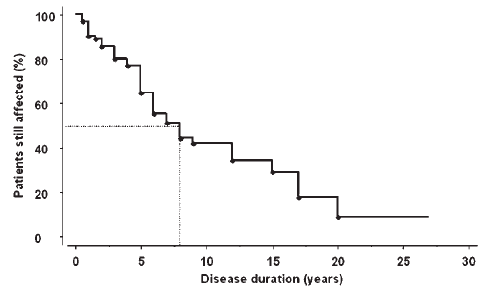
3.3.3 Episode Duration
The episode duration had median of 10 days and mean of 12+/-9 days. This meant that Kumbhakarṇa’s episode duration of 6 months (~180 days) appeared not in tune with KLS episode duration. I contacted premier sleep laboratories around the world and the who’s who in sleep researchers kindly supplied me with the much-desired evidence I was looking for. While the mean and median statistics for episode duration was discouraging for my conjecture, the range for episode duration was from 3 to 80 days! I was convinced, at least in my subjective conviction,
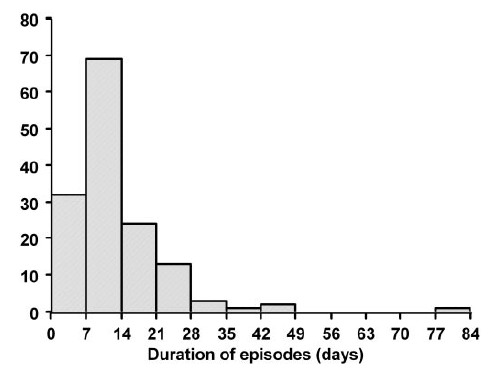
based on this evidence of 80 days long duration, that Khumbhakarna’s case indeed matched with KLS. My subjective conviction was objectively validated in 2015, when Lavault (2015) reported the KLS episode duration range from 1 to 360 days!
In general, duration of KLS episodes decreased with time. Vālmīki Rāmāyana evidence narrates such decrease in duration of KLS episodes for Kumbhakarṇa! Last but one episode of Khumbhakarna lasted for 6 months (Yuddha 12:11) and his last episode was abruptly interrupted due to the war in which he died. On the other hand, Rāvaṇa does narrate past episodes of Kumbhakarṇa that lasted for 7, 8, 9 or even 10 months!
Yuddha 60:17
नव सप्त दशाष्टौ च मासान् स्वपिति राक्षसः | मन्त्रम् कृत्वा प्रसुप्तोऽयमिअस्तु नवमेऽहनि ||
3.3.4 Interval between episodes – Duration
Interval duration between episodes ranged from 1 to 72 months with a median of 3.5 months and a mean of 6+/-10 months
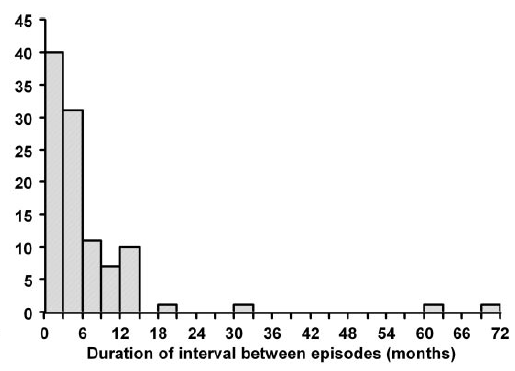
Vālmīki Rāmāyana has limited information about interval duration between episodes of Kumbhakarṇa and this duration between episodes is stated to be equal to one day.
Yuddha 61:29
रावस्य वचः श्रुत्वा स्वयम्भूरिदमब्रवीत् | शयिता ह्येष षण्मासानेकाहम् जागरिष्यति ||
3.4 KLS management
Although various drugs have been tried, there is no definitive treatment for KLS today and thus creating a comfortable resting place and surrounding for the patient as well as watchful waiting at home, rather than pharmacotherapy, is most often advised. It is then interesting to note the descriptions of underground palace Rakśasas visited to wake up Kumbhakarṇa. The palace was spacious with enormous gates, was decorated with precious stones and gold and was filled with floral perfumes.
Yuddha 60:24-26
ताम् प्रविश्य महाद्वाराम् सर्वतो योजनायताम् | कुम्भक्र्णगुहाम् रम्याम् पुष्पगन्धप्रवाहिनीम् ||
कुम्भकर्णस्य निःश्वासादवधूता महाबलाः | प्रतिष्ठमानाः कृच्छ्रेण यत्ना त्प्रविविशुर्गुहाम् ||
ताम् प्रविश्य गुहाम् रम्याम् रत्नकाञ्चनकुट्टिमाम् | ददृशुर्नैरृतव्याघ्राः शयानम् भीमविक्रमम् ||
Vālmīki Rāmāyana also preserves for us the descriptions of its initial construction. When Kumbhakarṇa’s KLS began, he asked Rāvaṇa to build a mansion for him. Rāvaṇa ordered his architects, as capable as Vishwakarma, to build a lovely mansion. It had beautiful appearance and was free from disturbance for Kumbhakarṇa. It was equipped with all amenities and all of it was built to be comfortable in all seasons.
Uttara 13:1-6

3.5 Behavior of KLS patients when not in KLS-episodes
Between episodes, almost all KLS patients were described as totally normal, the observation consistent with the behavior of Kumbhakarṇa. When not under the spell of KLS episode, Kumbhakarṇa lived a life of a family man with wife (Yuddha 12:21-22) and children. He was the chief wielder of weapons and was key member of Rāvaṇa’s counseling team (Yuddha 12:10-11). He was a brave warrior, had fought many wars for Rāvaṇa and was victorious (Yuddha 61:9-18, Uttara 25:30-37, 28:34-38). He had performed arduous tapasya (Uttara 10:3-5) and was moral in his outlook and great advisor to Rāvaṇa (Yuddha 12:28-35, 63:1-33, 65:9).
4. Causes of KLS: Modern conjectures vs Vālmīki Rāmāyana
Numerous research studies have been conducted to investigate the causes of KLS. They included medical examinations & tests, neurological signs, cerebrospinal fluid analysis, brain imaging and hormonal tests. None of these led to any conclusive findings and thus the cause of KLS remains a mystery. One of the most surprising things that recurred throughout all the patient’s stories was the suddenness with which the attack appeared and subsided. At the onset of the attack, it seemed that an invisible hand had turned off a switch in the boy’s brain, and in a split second he had turned from Dr. Jekyll into Mr. Hyde. After a few days, the switch was turned on, Mr. Hyde disappeared, and Dr. Jekyll took his place once more. Naturally, multiple theories are in vogue but without decisive evidence for any specific theory. It is then interesting to note that Vālmīki Rāmāyana provides three distinct theories (narrations) for the unique condition of Kumbhakarṇa.
4.1 Version 1 (Rāvaṇa)
Rāvaṇa describes the cause of Kumbhakarṇa’s condition as due to ‘Brahmā-śāpa’. He does not elaborate further.
Yuddha 60:13
स चाप्रतिमगाम्भीर्यो देवदानवदर्पहा | ब्रह्मशापाभिभूतस्तु कुम्भकर्णो विबोध्यताम् ||
4.2 Version 2 (Vibhīṣaṇ)
According to this version attributed to Vibhīṣaṇ, Kumbhakarṇa started devouring creatures, while still young and thus all creatures went to Indra. Indra fought with Kumbhakarana, however, was defeated by Kumbhakarṇa and thus went to Brahmā for assistance. Brahmā cursed (Brahmā-śāpa) that Kumbhakarṇa would remain buried in sleep like a dead. This is when Rāvaṇa intervened and Brahmā relaxed the ‘curse’ to six months of sleep and then one day of being awake (Yuddha 61:13-29). It is clear from the Vālmīki Rāmāyana narration that Vibhīṣaṇ is narrating a version that he heard from someone else (ददर्श ह) (Yuddha 61:22).
4.3 Version 3 (Agastya)
In this version, Sage Agastya tells those present in the royal hall of Rāma how Kumbhakarṇa performed tapasya and how Brahmā became pleased with Kumbhakarṇa. However, Goddess Sarasvati’s help was sought by devas to cause ‘abnormal speech’ and thus Kumbhakarṇa asked for the boon of ‘desiring to sleep for many years’ (Uttara 10:45). Brahmā bestowed this boon on Kumbhakarṇa and left. Only when Brahmā was gone, Kumbhakarṇa realized that he was deceived by devas. In any case, Kumbhakarṇa left with his brothers and lived happily in the ‘Ślemantak’ forest. In short, the ‘Brahmā-śāpa’ (curse of Brahmā) is the common theme, however, all other details are different. Rāvaṇa’s own narration simply refers to ‘Brahmā-śāpa’ while in the second narration by Vibhīṣaṇ, Rāvaṇa is present during the ‘Brahmā-śāpa’ event and intervenes with Brahmā, but Vibhīṣaṇ is not present. On the other hand, in the third version narrated by Sage Agastya, Vibhīṣaṇ and Rāvaṇa are present during the ‘Brahmā-śāpa’ but there is no intervention by Rāvaṇa.
5. Conclusion
Vālmīki Rāmāyana descriptions of Kumbhakarṇa and his unique condition, specifically its symptoms, diagnosis, management and speculation about its plausible causes corroborate remarkably well with the symptoms, diagnosis, management and plausible causes of Kleine-Levin syndrome. This makes the case of Kumbhakarṇa as the oldest (more than 14,000 years old) known documented cases of Kleine-Levin syndrome.
References
- American Academy of Sleep Medicine. The international classification of sleep disorders, revised. Chicago, IL: American Academy of Sleep Medicine, 2005.
- Arnulf I et al., 2005, Kleine–Levin syndrome: a systematic review of 186 cases in the literature. Brain 128, 2763–2776
- Arnulf I et al., 2008, Kleine-Levin syndrome: a systematic study of 108 patients. Ann Neurol 63:482–493.
- Arnulf I et al., 2012, Diagnosis, disease course, and management of patients with Kleine-Levin syndrome. Lancet Neurol 11:918–928.
- Billiard M et al., 2011, Recurrent hypersomnia: a review of 339 cases. Sleep Med Rev 15:247–257.
- Lavault S et al., 2015, Kleine-Levin syndrome in 120 patients: differential diagnosis and long episodes. Ann Neurol 77:529-540
- Oak, Nilesh, 2014, The Historic Rāma: The Indian civilization at the end of Pleistocene, Create Space Independent Publishing, USA.
- Vālmīki Rāmāyana (CE). BORI critical edition. Bhandarkar Oriental Research Institute, Pune.
- Vālmīki Rāmāyana (GP), 2006, Gita press edition with Sanskrit text and English translation, Gita Press, Gorakhpur, India.
- https://www.VālmīkiRāmayan.net/
- http://www.hypersomniafoundation.org/



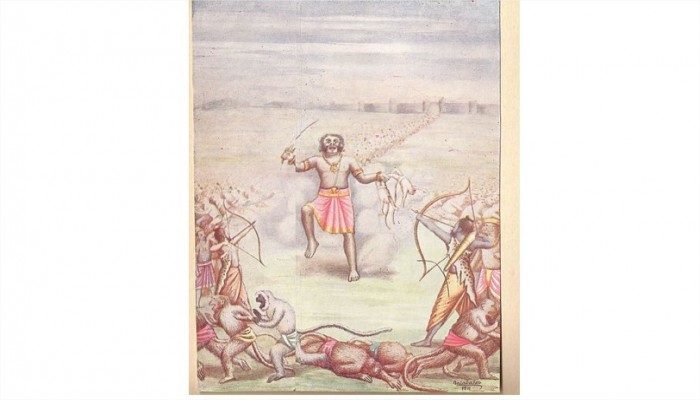



Comments